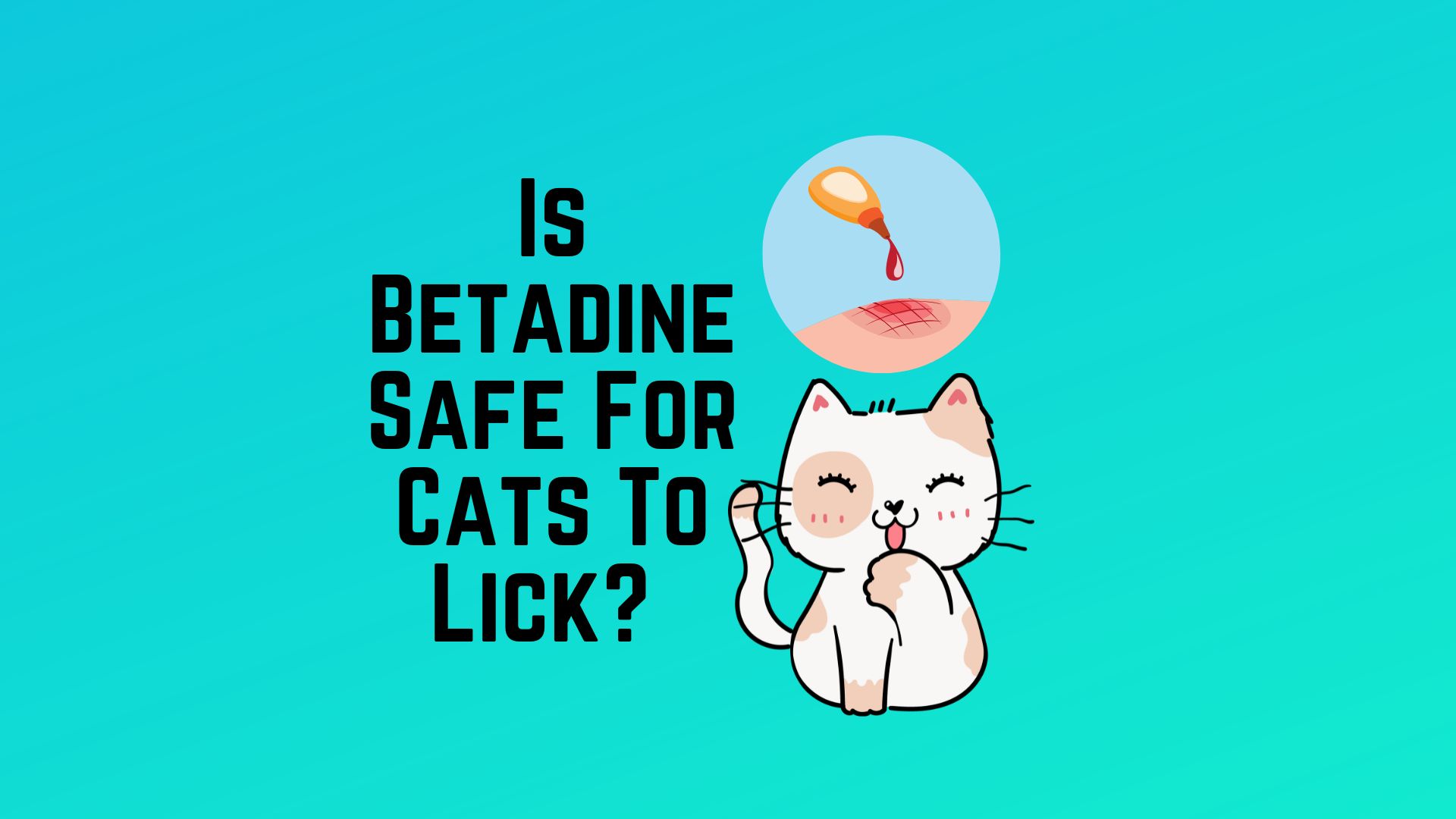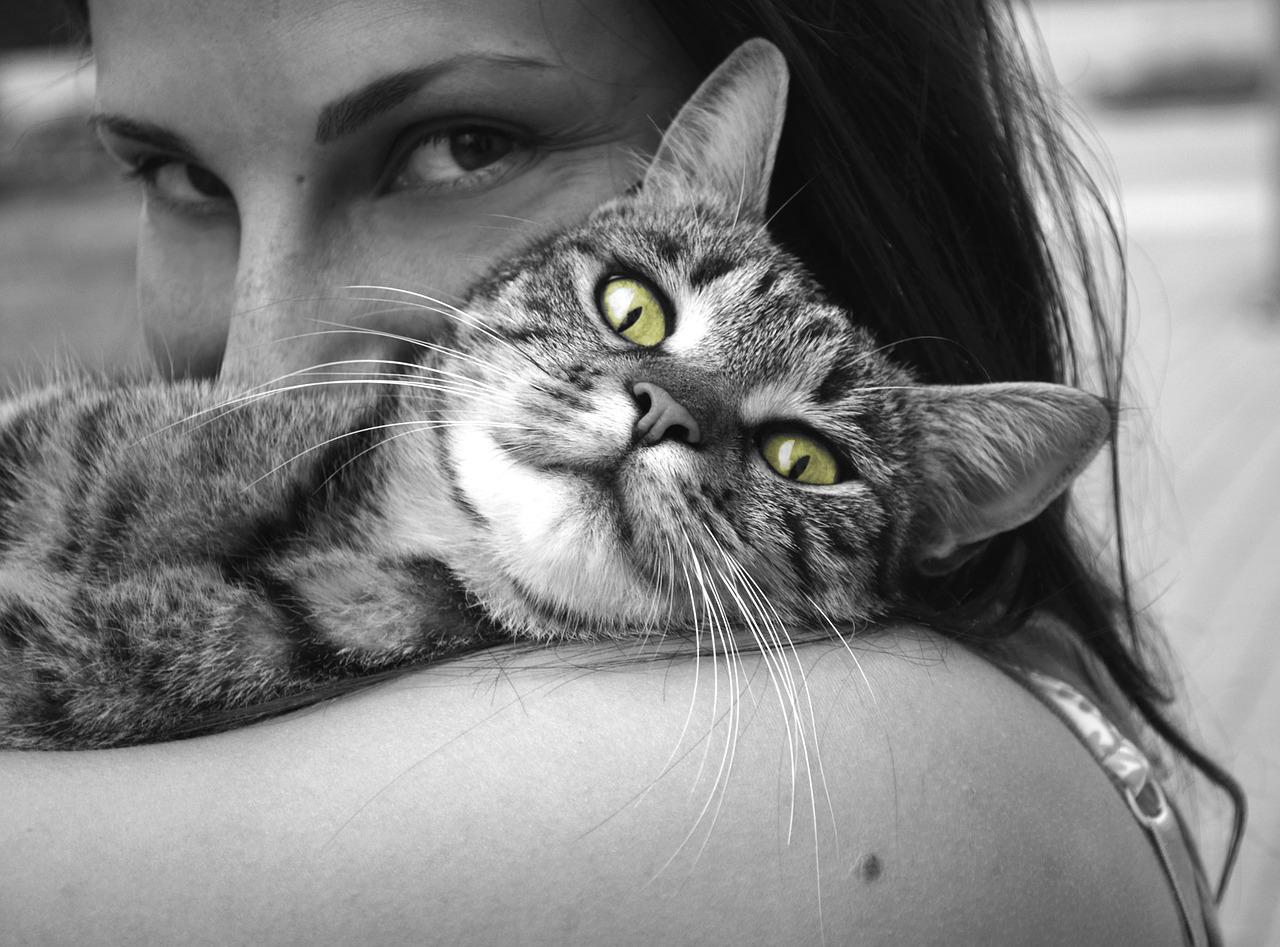
The answer to this question totally depends on the quantity consumed. Betadine is safe for felines to lick as long as the quantity is less. However, if it licks betadine in large quantities, the cat may get digestive issues or some serious illnesses. Consuming too much betadine can even kill your pet.
When you apply betadine to your feline’s wound, it will lick it. Therefore, it is important to block its access to the site of the wound with the help of a muzzle or a surgical cone.
You must always use Betadine on open cuts and wounds. Do not put it around the eyes. If you feel your feline has consumed Betadine, take your feline to the vet immediately.
Side effects of licking Betadine in cats
Here are a few dangerous side effects of licking Betadine in cats –
- Difficulty in breathing
- Collapse
- Vomiting
- Swelling of throat or face
- Diarrhoea
- Excessive drooling
What Is Betadine For Cats?
- Betadine is a medicine containing povidone-iodine.
- Basically, it is an antiseptic for topical use for various antimicrobial activities.
- These antimicrobial activities are because of the iodine content.
- Betadine is very effective against gram-negative and gram-positive bacteria.
- Moreover, it is very effective on protozoa, fungi, viruses, and spores.
Uses Of Betadine For Cats
Betadine is safe to use on cats as well as humans. It can help your cat with –
- Skin chafing
- Small cuts
- Minor burns
- Injuries
- Wounds
- Skin ulcers
Betadine is used for such problems that your feline faces. Vets also use it during surgeries. However, vets use it very cautiously. They sterile the environment and the site of the surgical incision. After they shave the fur of the cat, then they apply Betadine with gauze to ensure that the site of injury is free from bacteria.
Betadine for felines is very useful for controlling and cleaning infections in wounds. However, there are many other antiseptics that are better for your cat’s wounds.
What are antiseptics?
These are the antimicrobial substances that you can apply to the skin to kill pathogens and prevent chances of infection. There are 2 types of antiseptics –
- Bactericidal – It destroys bacteria
- Germicides – It destroys bacteria, fungi, viruses, and protozoa
What antiseptics are safe for cats?
Antiseptics that are safe for cats include iodine or chlorhexidine as the active ingredient.
Chlorhexidine
Examples – Microshield, Hexoral rinse, Chlorhexidine otic flush, VetOne, and Nolvasan Scrub Nolvasan Solution.
Instructions –
Dilute 2% of Chlorhexidine at a ratio of 2 tsp per 1 gallon of water.
Make sure you do not use it inside your feline’s ears unless directed by the vet.
This is because it is ototoxic.
Iodine
Example – Betadine
Instruction – Dilute the solution in water till the colour changes to the colour of weak tea.
What antiseptics are unsafe for cats?
Antiseptics that are unsafe for cats include Alcohol, Peroxigen, Phenols, Essential oils, Quaternary ammonium, and Neosporin.
Alcohol
Either isopropyl or methyl
Peroxide
The most common peroxide antiseptic is Hydrogen Peroxide.
Phenols
It is a substance that turns white when it comes in contact with water. It includes TCp and Dettol
Essential oils
Essential oils like lavender and tea tree are toxic for felines
Quaternary ammonium
For example – Savlon
Neosporin
Neosporin contains Polymyxin B. It can cause anaphylaxis in felines.
Many people believe that anything safe for us is safe for cats. However, cats do not have enough liver enzymes to cut down products that are safe for humans.
Felines are also at risk of toxicity because of consuming anything which comes in contact with the coat when they groom themselves by licking.
Why are these antiseptics dangerous to cats?
- Toxicity
- Burns on the tongue
- Ulcers
- Embolism
- Anaphylactic shock
- Damage to the tissue.
How to treat a wound on a cat?
Here is what you need –
- Sterile gauze
- Syringe (without needle)
- Sanitary towel to clean the wound
- Water
- Antiseptic
- Salt
- Water
- Scissors
- Soap
- Saline solution
Instructions
- Wash your hands and dry
- If the area is bleeding, use gauze and apply pressure to the site of injury gently. Do it for 10 minutes.
- Irrigate the wound with the help of a syringe filled with saline to get rid of debris. If you do not have a syringe, you can use a soft cloth or clean gauze.
- Once the bleeding has stopped, apply antiseptic to the cleaned site.
- Also, cover the 1-inch margin around the affected site.
- Pat the affected area with a clean cloth or gauze.
How can I heal my cat’s wound naturally?
Epsom salts are a good option to heal your feline’s wound naturally. Epsom salts are nearly always useful for best domestic care. As long as your feline will abide by wet ministrations, these salt soaks and warm packs are a brilliant add-on to antibiotics and surgical procedures.
What happens if my cat licks coconut oil?
Although coconut oil isn’t toxic to cats, it could not be the perfect addition to every cat’s food regimen. Any change in food regimen, supplements, or medicines can have an effect on your cat’s health. Depending on your cat, extended fats in the food regimen might also additionally result in weight gain and digestive problems.
Is coconut oil good for cat wounds?
The answer is yes and no. Coconut oil is known to have antifungal, anti-bacterial, and even anti-viral propertiesTherefore, the use of coconut oil on minor wounds, as a moisturiser for dry and flaky skin or as a protector on pets’ paws are a few benefits.
How poisonous is Betadine?
It is said that if Betadine is consumed in huge quantities, it is better to take medical help as soon as possible. Judy Stone, an Infectious disease specialist says that the symptoms of Betadine poisoning include diarrhoea, vomiting, acidosis, kidney failure, and in some worst cases death.
Final Words
In conclusion, I would say that Betadine in small quantities is ok for a cat to lick. Betadine in high quantities can make your cat severely ill as it is poisonous. To prevent your cat from licking the wounds, put a cone on your feline’s head.
I hope you enjoyed the article. I will be back soon with more interesting and informative pieces of writing. Till then stay connected. Thank you.
Frequently Asked Questions
Can animals lick Betadine?
Licking Betadine in a smaller quantity is ok for animals. Moreover, you should use a gentle betadine brand so that it will be safe for your pet if it licks the wound.
Is Betadine toxic to animals?
Betadine is harmless to animals if consumed in small quantities. If you apply it on the wound that is unreachable then there is nothing to worry about any additional problem coming with it.
What can I clean a cat’s wound with?
First of all, flush the wound with gauze. It is very important to clean the wound as it contains debris and bacteria. Gently clean the site of injury with a wet cloth and saline or iodine solution. It is best to clean debris and hair from the site of injury without rubbing much.
Is Vaseline good for cat wounds?
Be gentle because the skin around the wound is often very sensitive and damaged. A bit of Vaseline placed into the wound can assist to seize any lone hair and can then be lightly removed afterwards.
Can cats lick their wounds clean?
Cats can lick the wounds clean, however, their mouth contains bacteria which can trigger abscess, skin infection, or even fatal sepsis. This is why many vets recommend pet parents keep their felines from licking the injured area.
Can cats lick antiseptics?
Do not use antibacterial or disinfectant lotions on your feline until prescribed by a vet, as these lotions can damage the skin and can poison your feline when it licks the wound.

Hi, This is Alexa, and I love cats. This Website is a Complete Journal about how to travel with a cat and other information about Cat Health, Cat Training, Cat Behavior, Cat Foods and more. I hope you find it useful.
